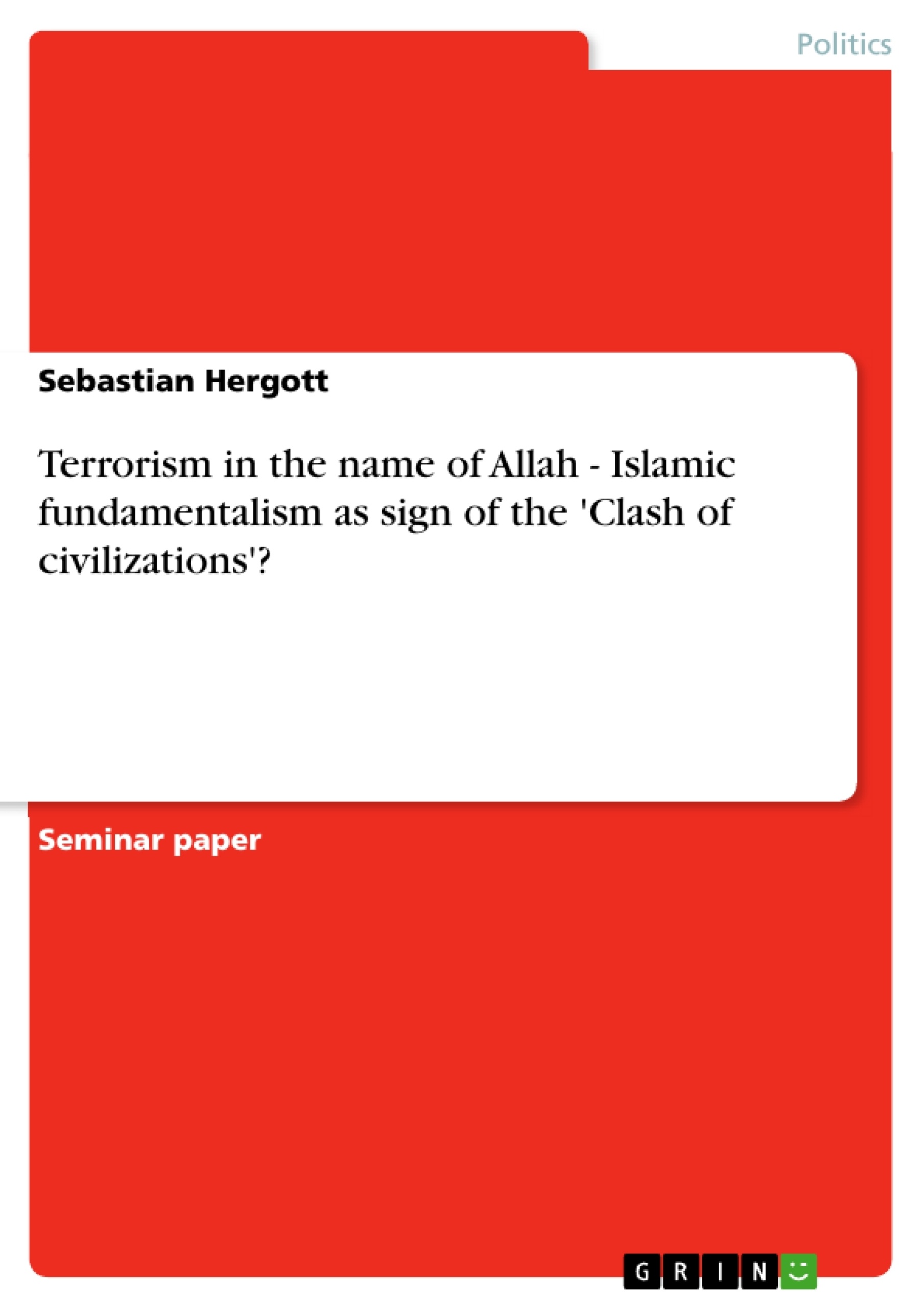Introduction
“On 26th February 1993, at approximately 12.18 p.m., an improvised explosive device exploded on the second level of the World Trade Center parking basement…”(1) Killing five people and injuring a couple of hundred people, the World Trade Center bombing still is present in the USA. “On Wednesday, 21 December 1988 at 7:03 pm GMT a Boeing 747 airliner owned and operated by Pan American World Airlines and cruising at 31,000 feet exploded above the small town of Lockerbie. Pan Am Flight 103 had taken off from London Heathrow some 38 minutes before and was en route to JFK Airport in New York. Aboard the aircraft were 243 passengers and a crew of sixteen. None survived.”, another tragic moment in world history(2). What do these two incidents have in common? They are both acts of international terrorism. But they share another common characteristic. They are religious motivated acts of terrorism. And this is quite important. In my personal opinion this kind of terrorism is rapidly increasing.
[...]
______
1 Compare to URL: http://www.interpol.int/Public/Publications/ICPR/ICPR469_3.asp (3-21-01)
2 Compare to URL: http://www.thelockerbietrial.com/from_lockerbie_to_zeist.htm (3-21-01)
Inhaltsverzeichnis (Table of Contents)
- Introduction
- Characterizing Terrorism
- Characterizing the Islamic Fundamentalism
- Why is religious fundamentalism dangerous?
Zielsetzung und Themenschwerpunkte (Objectives and Key Themes)
This paper aims to explore the nature of Islamic fundamentalism and its connection to terrorism, specifically focusing on the reasons behind Western fears of this phenomenon. It examines the characteristics of this type of terrorism, its motives, and the potential dangers it poses to Western civilizations. The paper also questions whether the West has justifiable cause for fear of the Islamic world.
- The definition and different types of terrorism.
- The characteristics of Islamic fundamentalism and its relationship to violence.
- The motivations behind religiously-motivated terrorism.
- The perceived threat of Islamic fundamentalism to Western societies.
- The question of whether Western fears of the Islamic world are justified.
Zusammenfassung der Kapitel (Chapter Summaries)
Introduction: This chapter introduces the topic of religiously-motivated terrorism, using the World Trade Center bombing and the Lockerbie bombing as examples. It highlights the increasing prevalence of this type of terrorism and emphasizes the difficulty in defining terrorism generally due to its diverse forms and intentions.
Characterizing Terrorism: This section differentiates between national and international terrorism, focusing on the latter as the main concern. It describes terrorist groups as well-organized entities with specific goals, often aiming to destabilize political systems to gain influence. The chapter also notes that terrorism's motivation stems from dissatisfaction and a desire for attention, often targeting public spaces.
Characterizing the Islamic Fundamentalism: This chapter delves into the Islamic religion and tradition to understand the roots of Islamic fundamentalism. It explains the core belief in one god ("Allah") and the lack of distinction between religion and state in many Islamic societies, where religious law ("sharia") often becomes state law. The concept of "dar ul-islam" ("House of Peace") and "dar ul-harb" ("House of War") is also discussed, illustrating the historical goal of Islam to expand its influence.
Schlüsselwörter (Keywords)
Terrorism, Islamic fundamentalism, religious extremism, religiously-motivated terrorism, Western societies, "Clash of Civilizations," political destabilization, "dar ul-islam," "dar ul-harb," sharia.
- Arbeit zitieren
- Sebastian Hergott (Autor:in), 2001, Terrorism in the name of Allah - Islamic fundamentalism as sign of the 'Clash of civilizations'?, München, GRIN Verlag, https://www.grin.com/document/651



